Connect with us

Google Meet vs Webex vs Zoom: Important Features to Compare and Consider [2023]
Let’s get straight to the point - Why did you click open an article that compares Google Meet, Zoom, and Webex Meeting?
You, most probably, want to know which one, out of these three, will be the perfect buy for your business.
Or perhaps you have questions about their features, pros and cons, and pricing.
In this article, we’ll answer the question everyone is asking in 2023 - What’s the best online conferencing software to use for both personal and business use?
But before we dive into the features and pricing, let’s take a quick look at each of these tools and their growth during COVID-19.
Table of Contents
- 1. Zoom vs Google Meet vs Webex: Introduction
- 2. Free limitations Google Meet vs Zoom vs Webex
- 3. Security: Google Meet vs Zoom vs Webex
- 4. Interface & Ease of Use: Google Meet vs Zoom Vs Webex
- 5. Plans & Pricing: Google Meet vs Zoom Vs Webex
- 6. Screen Sharing and Controlling: Google Meet vs Zoom vs Webex
- 7. Call Scheduling: Google Meet vs Zoom vs Webex
- 8. Data usage: Google Meet vs Zoom vs Webex
- The Verdict
- Looking for Alternatives? Try Troop Messenger:
- Bottom Line
1. Zoom vs Google Meet vs Webex: Introduction
Zoom
Zoom will forever be associated with the coronavirus lockdown, which has exploded into the public consciousness after the introduction of social distancing measures.
Because of the coronavirus and nationwide lockdowns, Zoom surpassed 300 million daily Zoom meeting participants.
That’s up 50 percent from the 200 million the company reported earlier this month and a huge jump from the 10 million back in December.
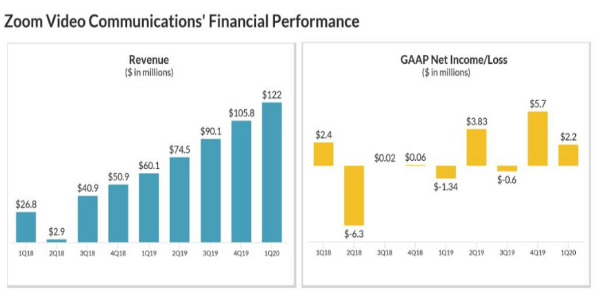
But a series of missteps have turned some Zoom users away, many of whom may now be considering alternatives like Cisco Webex and Google Meet.
Google Meet
Google Meet, previously known as Hangout, is Google’s video conferencing solution.
Amid the pandemic, Google Meet surpassed 50 million downloads. According to Google, Meet’s peak daily usage has grown by 30 times since January 2022. And now, this video conferencing app hosts 3 billion minutes of video meetings every day.
Cisco Webex Meeting
Cisco Webex offers one of the most secure video conferencing platforms on the market, making it a very appealing video conferencing solution.
When the coronavirus-led lockdowns forced employees to work from home, Webex registered a record 324 million attendees in March and still has usage more than doubling in the Americas.
2. Google Meet vs Zoom vs Webex: Free Limitations
Google Meet, Zoom, and Webex - all three video conferencing tools have a free plan, but with certain limitations.
Where Google Meet offers a meeting time limit of sixty minutes for its free users, Zoom and Webex each offer 50 and 40 minutes the time limit.
This means that free users of these video conferencing solutions can’t hold a conference for more than the stipulated meeting time limit.
Furthermore, each of these tools offers a participant size limit of 100. Here’s a tabular analysis of free limitations of Google Meet, Zoom, and Webex
Features |
|
|
|
Direct Web Access | Yes | No | No |
Participants limit | 100 | 100 | 100 |
Meeting Time Duration | 60 Minutes | 50 Minutes | 40 Minutes |
Screen Sharing | Yes | Yes | Yes |
Recording Support | No | No | Yes |
Multiple participants on a single screen | Yes | Yes | Yes |
Availability | Web, Android, iOS | macOS, Android, iOS, and Windows | macOS, Android, iOS, and Windows |
Who’s Got an Edge on Free Limits?
![]() Google Meet: With 60 minutes of meeting duration, Google Meet is a step ahead of both Webex and Zoom’s free plan. As for the other features, all three giants are offering pretty much the same services.
Google Meet: With 60 minutes of meeting duration, Google Meet is a step ahead of both Webex and Zoom’s free plan. As for the other features, all three giants are offering pretty much the same services.
But if recording support is a priority for your business, Zoom’s free plan may suit your team better because both Webex and Meet don’t offer that in the free plan.
3. Google Meet vs Zoom vs Webex: Security
Google Meet
Google Meet is touted as one of the most secure video conferencing tools pertaining to its encryption measures.
All Meet data is encrypted in transit by default between the Google and client on both the web browser and iOS or Android apps. Recorded meetings are also stored as encrypted data in Google Drive by default.
Google Meet adheres to security standards such as Datagram Transport Layer Security (DLTS), Secure Real-time Transport Protocol (SRTP), and Internet Engineering Task Force (IETF).
Cisco Webex Meeting
Like Google Meet, the Cisco Webex platform also protects user data by encrypting stored and shared content during meetings.
All communication in the Cisco Webex is encrypted both in transit and at rest. It uses the TLS 1.2 protocol for all media streams including VoIP, screen sharing, video calling, and document sharing.
Once configured by the users, Webex Meeting protects all user data using SHA-2 protocol and encrypts all passwords for recording and meeting. The files are encrypted with master keys that are based on AES 256 and hardware security modules.
Zoom
Zoom has recently been in the limelight for its security concerns. A lot of users reported security breaches and data theft issues. However, Zoom has released the 5.0 version to address such concerns and now uses AES 256-bit GCM encryption to enhance its security standards.
Yet, the app is still seeing Zoombombing issues, which calls for more robust security features than the current one.
Who’s Got an Edge on Security?
Cisco Webex & Google Meet: In terms of Security, both Cisco Webex Meeting and Google Meet wins. Zoom loses many points because of past security issues, and
4. Google Meet vs Zoom Vs Webex: Interface & Ease of Use
Google Meet
Google Meet’s interface is simple and clear. Users can start, join, or plan meetings through the right panel of the screen, and the interface has clear buttons that can be used for adjusting the audio, video, and other general settings.
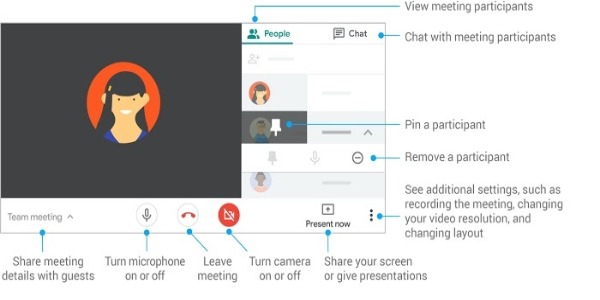
The best thing about Google Meet’s interface is it’s quite sorted. You see very limited options on the start screen and the other options are located at different (but easy to locate places). The clean interface makes Meet very easy to use as compared to other video conferencing tools.
Zoom
If a user has already installed the Zoom app, participating in a meeting hardly takes two clicks and five seconds. Even with the web app, it’s so easy to join the meeting.
Zoom’s interface is clutter-free. But one aspect that makes it more interesting is that the admins can review information about the participant's connectivity during the call. The host can easily recognize if a participant is having a problem with their internet connection.
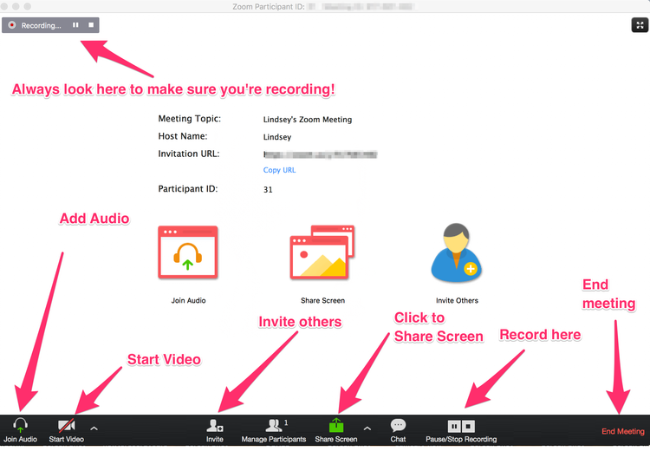
As for the participants, they can connect and chat with the host. The host has quick access to multiple features such as creating a waiting room, adding new participants, turning on/off participants’ microphones, enabling chat, and more. Despite these many options, Zoom’s interface doesn’t feel overwhelming and one can easily navigate.
Cisco Webex
Cisco’s Webex has a very intuitive interface that looks similar to other services during a phone call. There’s a clear dashboard where you chose to start, join, or plan a meeting. On the right side of the screen, there are options to schedule meetings and review previously scheduled meetings.
When you’re planning a conference or meeting via Webex, you can use standard functions such as date, time, and meeting duration, and also send invites to the participants. Furthermore, there’s an option to add meeting agendas as passwords to enable restricted access.
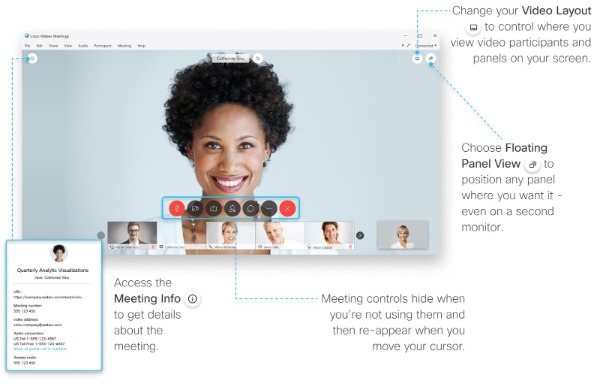
Who’s Got an Edge on Interface?
It’s a tie: All these three giants exceed in terms of interface. They all focus on making it clear, easy to use, and have a sharp learning curve.
5. Google Meet vs Zoom Vs Webex: Plans & Pricing
When it comes to choosing the best video conferencing tool for your business, pricing is the most important aspect. When two tools have relatively similar features, it’s the price that breaks the tie. Companies often look for flexible and cost-effective software that fits their budget and also allows them to scale whenever required.
Google Meet Pricing
Google Meet is part of G Suite, which means it's available for free for all businesses having a G Suite subscription. Starting at $10 per user/month, Google offers a basic tier plan of all G Suite apps bundled with a cloud storage capacity of 30 GB. There’s also the Business and Enterprise plan - the $20 per user/month plan offers 1 TB cloud storage, whereas the $25 offers unlimited cloud storage, advanced management options, and enhanced security.
Plan Name | Cost | Participant Limit | Meeting Duration |
Free | $0 | 100 | 60 Minutes |
G Suite Essentials | $10 USD per active user/month* | 150 | 300 Hrs |
G Suite Enterprise Essentials | $20 USD per active user/month* | 250 | 300 Hrs |
Zoom Video Conferencing
The Zoom starts at $14.99 per month/host for the pro plan - which is considered an ideal plan for a small team of 100 participants and meeting a time limit of 24 hours. Zoom offers the most extensive video conferencing features with the Business tier plan starting at $19.99 per host per month.
Plan Name | Cost | Participant Limit | Meeting Duration |
Basic | Free | 100 | 40 Minutes |
Pro | $14.99/mo/host | 100 | 24 Hrs |
Business | $19.99 /mo/host | 300 | 24 Hrs |
Enterprise | $19.99 /mo/host | 500 | 24 Hrs |
Cisco Webex Pricing
Like Google Meet, the Webex meeting is also an integrated Webex service. So, if you’re already using Webex solutions, it’s a great choice.
Webex has multiple pricing plans named Agile User, Power User, and Modern Workspace. Starting at $16.82 per host per month, the Agile User plan offers unlimited toll dial-in, unlimited meetings, 10 GB of cloud storage, and up to 1000 participants in each meeting.
At $40.71 & $55.73 per host per month, the Power User and Modern workspace plan offer additional features such as Cisco video cloud, content management, Webex assistant, and more.
Plan Name | Cost | Participant Limit | Meeting Duration |
Free | $0 | 100 | 50 Minutes |
Agile User | $16.82 per host per month | 1000 | 24 Hrs |
Power User | $40.71 per host per month | 1000 | 24 Hrs |
Modern Workspace | $55.73 per host per month | 1000 | 24 Hrs |
Who’s Got an Edge on Pricing?
![]() Google Meet: Comparing the price of these three video conferencing tools is difficult since Zoom as a standalone web/video conferencing app costs much more than Webex and G Suite, which are integrated collaboration suites. At $6 per user/month, G Suite’s Google Meet offers similar features at a cheaper rate. So, when it comes to pricing, Google Meet is the undisputed winner.
Google Meet: Comparing the price of these three video conferencing tools is difficult since Zoom as a standalone web/video conferencing app costs much more than Webex and G Suite, which are integrated collaboration suites. At $6 per user/month, G Suite’s Google Meet offers similar features at a cheaper rate. So, when it comes to pricing, Google Meet is the undisputed winner.
6. Google Meet vs Zoom vs Webex: Screen Sharing and Controlling
Google Meet
On Google Meet, users can share their whole screen or a specific window, or a Chrome tab during the meeting. Through screen sharing, one can share documents, spreadsheets, presentations, and more. When you share a Chrome tab, it shares the tab’s audio by default. Hence, when you can play an online video as well.
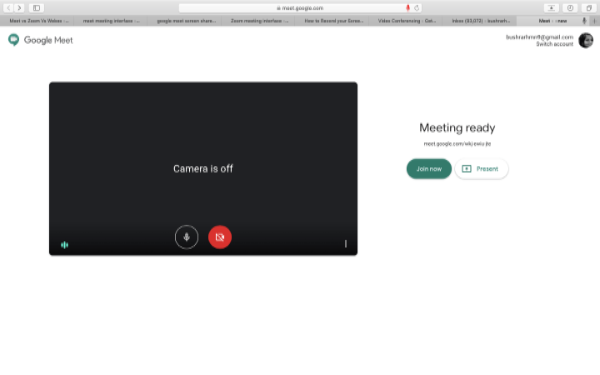
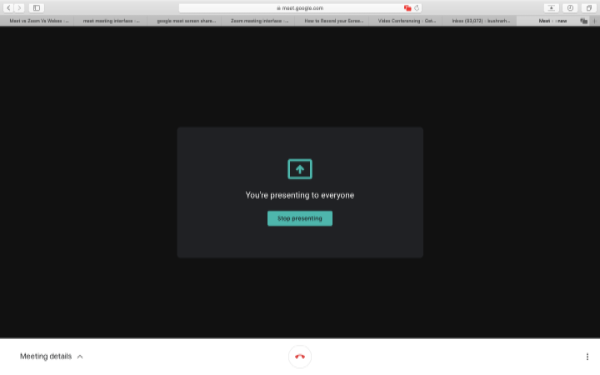
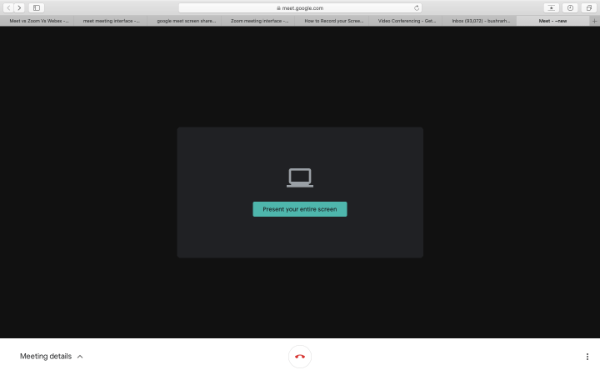
Cisco Webex
With Cisco Webex Meeting, one can easily share their device screen with meeting participants. There's an option to choose between sharing the complete screen to a specific app or document such as Powerpoint or MS Word.
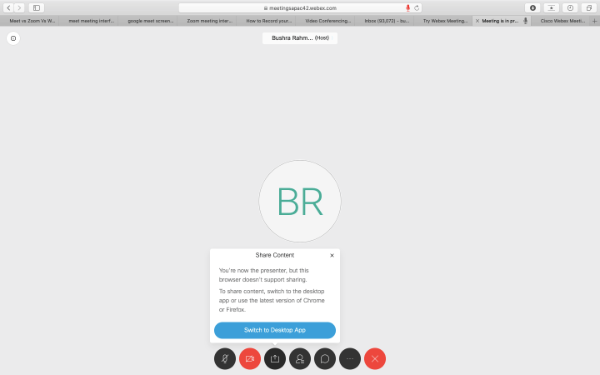
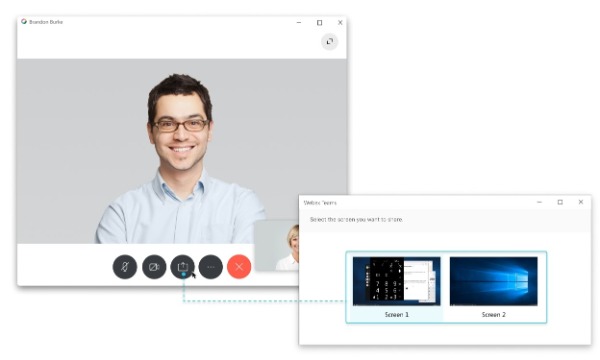
What makes Cisco Meetings convenient is anyone in the meeting can share a screen without having to request control. With the screen-sharing features, the control is at the fingertips. Video layouts are also customizable, allowing hosts to easily toggle back and forth from video conferencing to screen sharing.
Zoom Video
On Zoom, Screen sharing is both super convenient and cool. There are so many options when it comes to sharing your devices’ content. Zoom gives you the following sharing options when it comes to content sharing:
- A specific application
- Entire desktop or phone screen
- A portion of your screen
- Content from a second camera
- Whiteboard
- Device audio
- iPhone/iPad screen
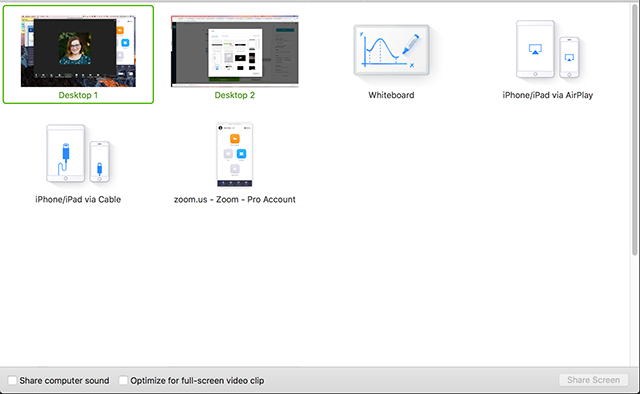
Furthermore, Zoom allows hosts to have a distinct level of control during the meeting. They can enable or disable the participant’s ability to share audio, video, and the screen. For example, in a webinar, only a host, panelists, or co-host can share their screen.
Who’s Got an Edge on Screenshots?
Zoom Video: Zoom leads way ahead in terms of screen sharing with advanced features such as a whiteboard, content sharing from the second camera, and more. Cisco meeting is great too but when it comes to screen-sharing features, Zoom certainly wins. Google Meet doesn’t have any advanced functionality in terms of screen sharing hence it lags behind here.
7. Google Meet vs Zoom vs Webex: Call Scheduling
Google Meet
Google Meet users can start meeting through mobile phones or computers. The G-Suite users can directly sign into their G Suite account, and the non-G-Suite users can log in through their Google account.
On Google Meetings, meetings are scheduled through the Google Calendar app, and a meeting code is generated, which is required for participants to join the meeting. Participants can also join through the shared link.
Webex Cisco Meeting
Like Google Meet, Cisco Meeting also enables meeting scheduling. Users can set up both instant meetings and also schedule calls for recurrent meetings. On Cisco, one can start, join, schedule meetings, and assign a host in a few clicks.
Once the meeting is scheduled, hosts can send invites and reminders to participants and also set up recurring meetings through the Outlook scheduler.
Zoom Video
At Zoom, users get multiple methods to schedule meetings. Zoom host has control over scheduled meeting options except when an admin has locked access. Zoom hosts can schedule meetings from the Zoom web portal, desktop client, mobile app, Outlook add-in, Chrome Calendar extension, and more.
Who’s Got an Edge on Call Scheduling?
Zoom Video: Since Zoom offers multiple ways to schedule calls, it has an edge over others. Scheduled Zoom meetings can be started at any time before the scheduled time. The meeting links do not expire unless it has not been used for 365 days for a recurring meeting or it has been deleted from the Zoom account.
8. Google Meet vs Zoom vs Webex: Data usage
Data Usage is one of the important concerns for many users. The virtual conferences apparently require high-speed internet connectivity and hence consume a large size of data. Let’s take a look at the average data consumed by each of these video conferencing solutions:
Google Meet
Average bandwidth per participant |
|
|
Meeting type | Outbound | Inbound |
HD Video | 3.2 Mbps | 1.8 Mbps |
Audio only | 12 Kbps | 18 Kbps |
(Source: Google Meet Help)
Ideal bandwidth per participant |
|
|
Meeting type | Outbound | Inbound |
2-person HD video meetings | 3.2 Mbps | 2.6 Mbps |
Group video meetings | 3.2 Mbps | 3.2 Mbps |
(Source: Google Meet Help)
Zoom Meeting
Data Usage in One-on-One Calls:
Quality | Download | Upload | Total |
High | 270MB per hour | 270MB per hour | 540MB per hour |
720p | 540MB per hour | 540MB per hour | 1.08GB per hour |
1080p | 810MB per hour | 810MB per hour | 1.62GB per hour |
Data Usage in Group Calls:
Quality | Download | Upload | Total |
High | 450MB per hour | 360MB per hour | 810MB per hour |
720p | 675MB per hour | 675MB per hour | 1.35GB per hour |
1080p | 1.2GB per hour | 1.2GB per hour | 2.4GB per hour |
Webex Meeting
The size of a Network-Based Recording (in both ARF and MP4) will vary depending on the features used within the meeting.
See the estimated meeting sizes by activity below:
- Application/desktop sharing: 110 MB per hour
- VoIP audio: 30 MB per hour
Video Centric Recording:
- 360p (High Quality) video: 40 MB per hour
- 720p (High Definition) video: 220 MB per hour
The Verdict
Given how each of these tools has acquired such a significant share in the video conferencing market, it was obvious that the final decision would be based on a small margin. If you’ve read this article thoroughly, you’d know almost all the sub-categories had near-ties. All three have some unique selling points but there can only be one winner.
Each of these three video conferencing tools comes with its own list of pros and cons that we have mentioned in the article. With the analysis made above, you can ensure choosing the right video conferencing solution for your business’s requirements.
If you still want to break down the learning further, here’s a table that represents highlights of Google Meet vs Webex vs Zoom, alongside some of the functionalities worth considering when making purchase decisions.
Video Conferencing App | Free Version Availability | Screen-Sharing Feature | Number of Meeting Participants (Default) | Meeting Recording |
| Yes | Yes | 100 | Yes |
| Yes | Yes | 100 | Yes |
| Yes | Yes | 100 | Yes |
Video Conferencing App | Per Month Plan | E2E Encryption | Supporting platforms |
| $13.50 | No | Android, iOS, Windows, macOS |
| $6.00 | Yes | Android, iOS, Windows, macOS, Linux |
| $14.99 | Yes but users are still complaining of Zoombombing issues | Android, iOS, Windows, macOS, Linux |
For companies that are using G-suite, Google Meet clearly the best choice. In Google Meet, features are not limited to video calling or conferencing only, and the best part, you don’t have to pay for any additional charges.
Now, if you take a look at the other side of the field, you’ll find Zoom and Webex, where many companies want to avoid Zoom for privacy reasons, but no one can deny its capability as the best video conferencing software. It has got the most extensive feature.
So, if Zoom can address the privacy concerns, it will be the best choice for organizations that can afford its comparatively expensive plans.
In the middle of the spectrum, there is Webex, which is a good choice if your business is using Cisco solutions. It offers the same functionalities as Meet and Zoom and works aptly.
Looking for Alternatives? Try Troop Messenger
Well, that was all about Google Meet, Zoom, and Webex. But what if these tools still don’t meet your business requirements? Or perhaps you’d like to consider a few more options before making the final choice.
Considering that, we’d suggest taking a look at Troop Messenger. Though known mainly as an office chat app, Troop Messenger excels as a video conferencing and virtual meeting app as well.
Apart from the many remarkable features such as one-on-one messaging, group texting, secure file sharing, Google Drive, and Dropbox integration, Troop Messenger offers video conferencing and desktop sharing features as well.
Cattle Call in Troop Messenger
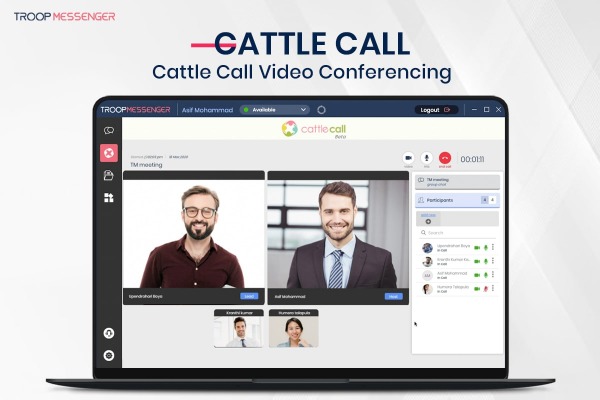
With its ‘Cattle Call’ feature, Troop lets you have face-to-face work conversations by hosting or joining video conferences. Through cattle call features, hosts can give video access to up to 6 Members and add unlimited members for audio access.
During the video conferencing, participants can initiate group chat. There are also options to make participants hosts, add/remove the video of a participant, remove selected users, or request to unmute the participant's audio/video.
Screen Sharing in Troop Messenger
Like Google Meet, Troop Messenger also lets meeting participants share screens with each other. As one of the most dynamic collaborative chat supporting features, screen sharing allows users to share their screen at the time of chat conversation so the recipient sees the entire real-time desktop screen. Both sender and receiver have the option to stop the screen-sharing session at their respective ends.
Bottom Line
Putting it all together, we can say Google Meet and Zoom make for ideal video conferencing tools. But if your business needs more than video conferencing or screen sharing, you can try Troop Messenger - an all-around office chat app with all features you need for video conferencing, team communication, enhanced productivity, and real-time collaboration.








